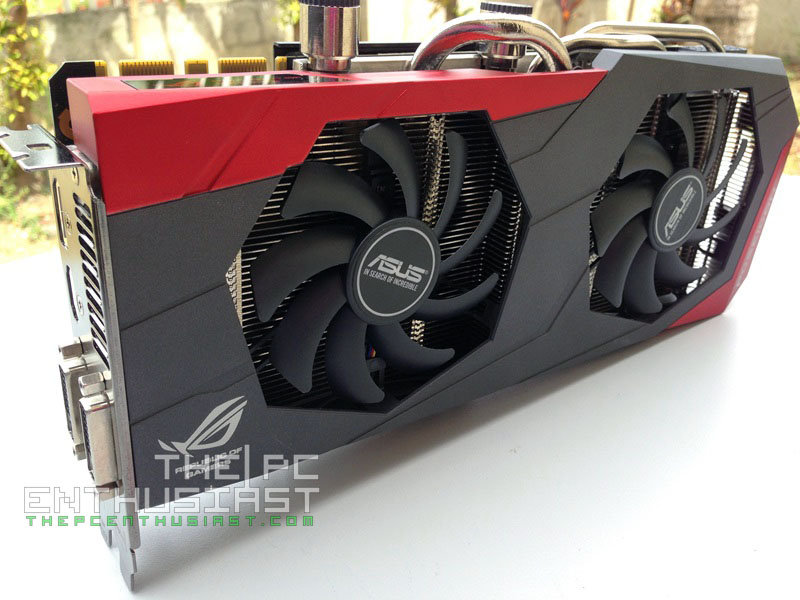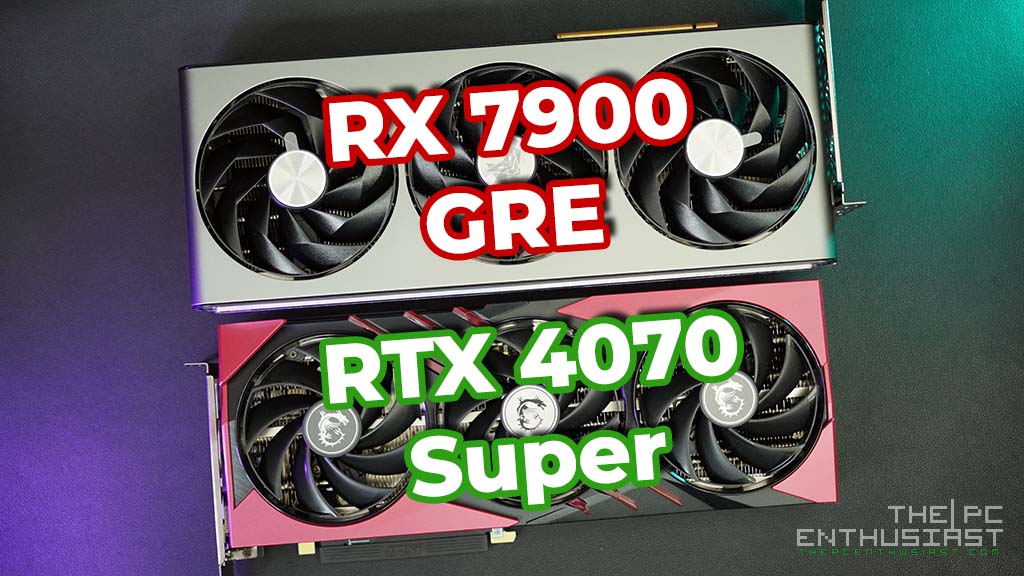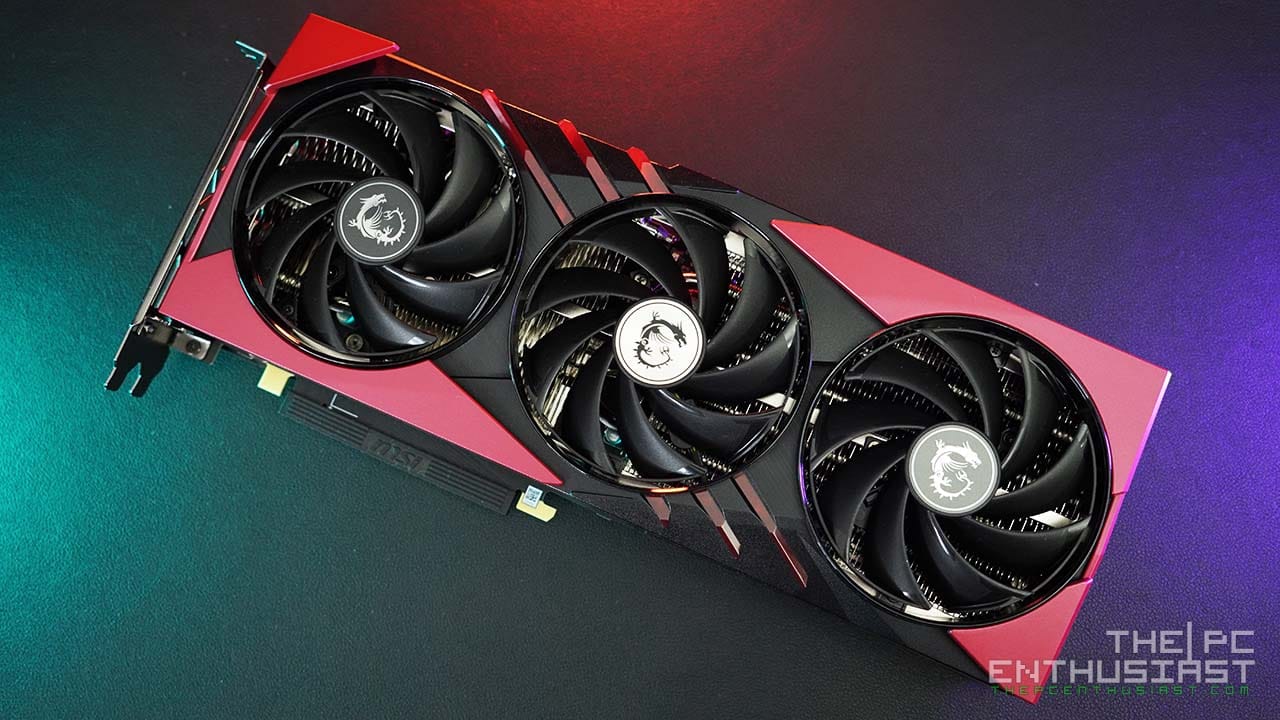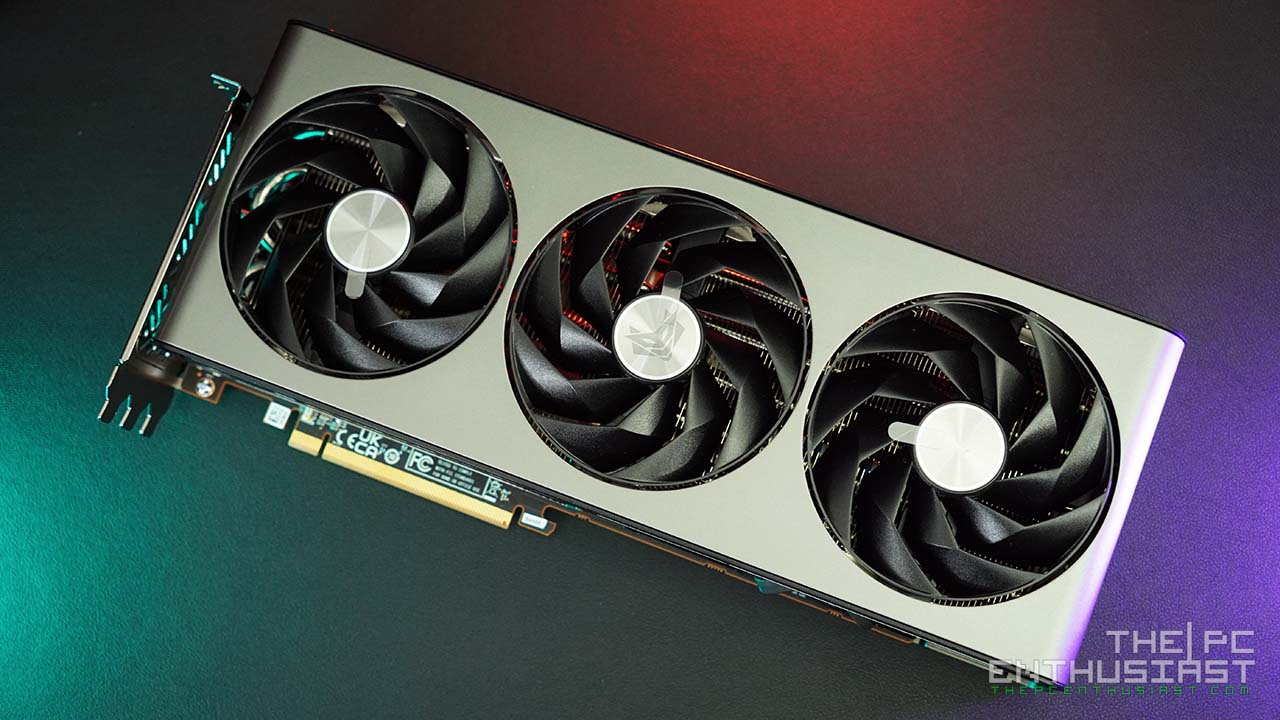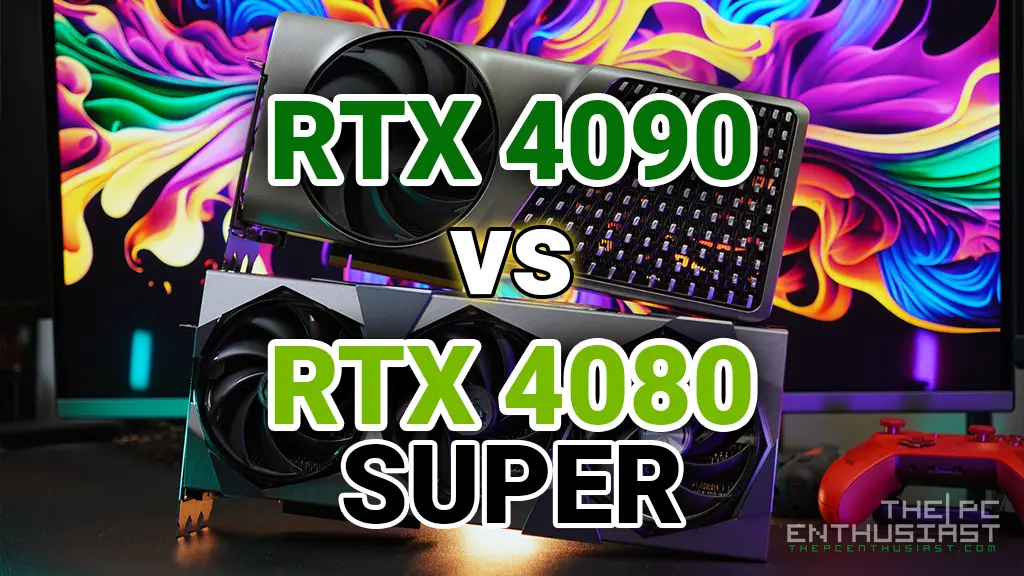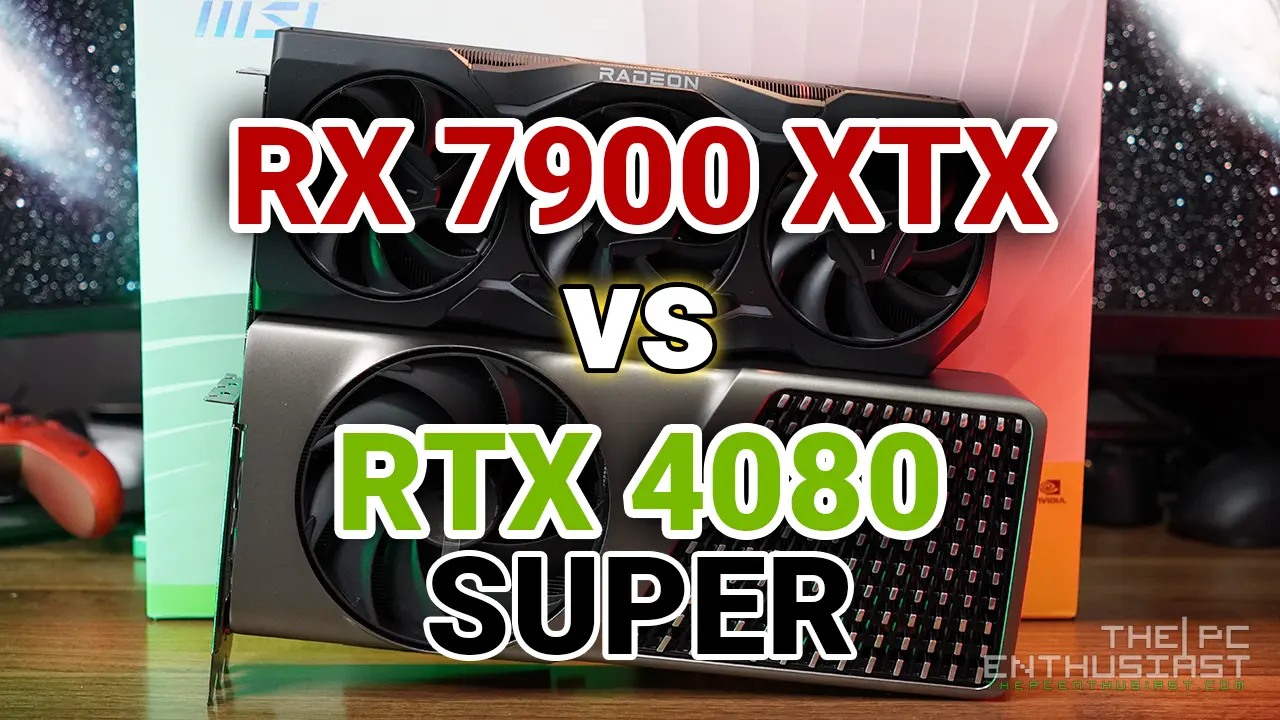Asus has evolved and further improved their award winning Direct CU II cooler in the form of the DirectCU H20, where air cooling meets water cooling. Today, let’s take a look at the Asus ROG Poseidon GTX 780 Platinum featuring Asus’ DirectCU H20 Hybrid cooler. The Poseidon GTX 780 Platinum not only has a unique and cool looking cooler and shroud design, but it also comes with factory overclock settings. Let’s find out more about the Poseidon in my review below.
Asus Poseidon GTX 780 Platinum Review
The Asus ROG Poseidon GTX 780 Platinum is basically an overclock variant of a GeForce GTX 780. It has a base clock speed of 954 MHz and a boost clock speed of 1006 MHz. It features DIGI+ VRM with 10-phase Super Alloy Power, delivering 30% less power noise and 2.5X greater durability. Asus also used Japan-made black metallic capacitors, offering 20% better temperature endurance and 5X longer lifetime usage.
It features a uniquely designed shroud with ROG LED light that pulsates in red when the card is active. It also supports GPU Tweak, GPU Tweak Streaming, G-Sync, CUDA, SLI, PhysX, Gamestream, GeForce Experience with Shadow Play and future DirectX 12 support.
But the most important feature that sets the Poseidon GTX 780 Platinum apart from other graphics card is its unique DirectCU H20 cooler. The DirectCU H20 is a great innovation where you can cool the graphics card either by air-only or water, making it a lot cooler (similar to a custom water cooled GPU) and perform better.
The Asus ROG Poseidon GTX 780 Platinum features a standard G1/4-inch threaded fitting where you can readily connect it to any custom water cooling system. It also has a sexy aluminum brushed back plate which adds stability and support to the card and helps dissipate some of the heat coming from the chips.
Aside from the Poseidon GTX 780 Platinum, Asus released a non-Platinum variant with lower clock speeds. Asus also released a Poseidon GTX 770 Platinum, but I wish they released a Poseidon GTX 780 Ti Platinum instead.
Check out the rest of its specifications from the table below and let’s take a closer look at the Poseidon itself.
Asus ROG POSEIDON-GTX780-P-3GD5 Specifications
| Specifications | ROG POSEIDON-GTX780-P-3GD5 |
|---|---|
| Graphics Engine | NVIDIA GeForce GTX 780 |
| Bus Standard | PCI Express 3.0 |
| Video Memory | 3GB GDDR5 |
| Engine Clock | GPU Boost Clock : 1006 MHz GPU Base Clock : 954 MHz |
| CUDA Cores | 2304 |
| Memory Clock | 6008 MHz (1502 MHz GDDR5) |
| Memory Interface | 384-bit |
| Interface | DVI Output : Yes x 1 (DVI-D), Yes x 1 (DVI-I) HDMI Output : Yes x 1 Display Port : Yes x 1 (Regular DP) HDCP Support : Yes |
| Power Consumption | up to 300Wadditional 6+8 pin PCIe power required |
| Accessories | 1 x Power cable 1 x ROG Metal Sticker |
| Software | ASUS GPU Tweak & Driver |
| Dimensions | 11.3 " x 5.4 " x 1.6 " Inch |
| ASUS Features | DirectCU H2O Series OC Series Super Alloy Power |
A Closer Look
The Asus ROG Poseidon GTX 780 Platinum comes in a nice ROG-themed box. Looking at the box alone you can tell how “premium” this graphics card is. Asus seems to follow a standard measurement (dimension) with their graphics cards’ box.
You can see an image at the back of the box showing the internals of the Poseidon GTX 780 and the DirectCU H20 component. There’s also a flip cover where you can see more of the card’s features, and a stylish window where you can have a sneak peak at the card. Inside the red box is another black box where the graphics card is securely placed, protected by cushions and a transparent plastic covering.
The package includes the Poseidon GTX 780 Platinum itself, a driver and software CD, a quick guide manual, and an extra PCIE connector. Now let’s take a closer look at the card below.
The photos above shows a closer look at the Poseidon GTX 780 Platinum. The shroud has a unique ROG design and the aluminum fins are cooled by two dust proof fans. At the back, you can see the nice aluminum brushed back plate that supports the card.
The Poseidon GTX 780 Platinum has two DVI ports, an HDMI port and a DisplayPort. The card can be connected up to three display monitors, great for multiple display setups. At the rear end of the card, we see the “Poseidon” logo, indicating that this card is cooled by the DirectCU H20 Hybrid cooler.
The Asus ROG Poseidon GTX 780 Platinum has two SLI fingers, making it possible for up to a 4-way SLI configuration. There are voltage check points located at the rear end portion of the card. The card draws its power from an 8pin+6pin power connector. Note that those power connectors are inverted, making it easier for users to remove the power cables.
The Republic of Gamers logo is backlit and pulsates when the card is turned on. Unfortunately it’s not a temperature or load indicator, unlike the one that we saw in the Striker GTX 760 Platinum. The G1/4 threaded fittings are covered by plastic caps and is advised to close it when not in use to prevent heat from escaping through the holes.
The photos above shows a closer look at the DirectCU H20. Unfortunately I can’t remove the shroud from the aluminum fins. And yes, the graphics card is heavy than usual.
Here we have a closer look at the PCB of the card. Nothing extra ordinary really.
Here we have a closer look at the power connectors and the voltage check points.
The Asus Poseidon GTX 780 Platinum features 10-phase Super Alloy Power, concreted chokes and harden MOSFETs making it possible for this card to withstand heat and stress. The Japanese-made black metallic solid-state capacitors provide 20% better temperature endurance and 5 times longer lifespan. The photo on the right is the card’s DIGI+VRM chip.
Here we have a good look at NVIDIA’s GK110 Kepler chip. It’s using a GK110-300-B1 chip. The Poseidon GTX 780 Platinum is using Elpida memory chips (W2032888G). I think Asus should have used Hynix or Samsung memory chips instead, since they overclock better compared to Elpida memory chips.
Test Setup
In testing the Asus Poseidon GTX 780 Platinum, I used my Intel Core i5 Sandy Bridge system with Asus P8H67-M Evo, and an 8GB DDR3 memory. Unfortunately I was not able to test the Poseidon with a custom water cooling setup. The test is only based on air cooling.
Operating System: Windows 8 Pro 64bit
Motherboard: Asus P8H67-M Evo
Processor: Intel Core i5-2500K
CPU Cooler: NZXT Kraken X60
Memory: 2x 4GB G.Skill RipJaws X
Graphics card: Asus ROG Poseidon GTX 780 Platinum
Hard Drive: Samsung 830 128GB for the OS and WD RE 4TB for game files
Power Supply: Corsair HX650 80 Plus Gold
Case: Cooler Master HAF XM
Case Fans Installed: 2x Cooler Master SickleFlow 120mm for intake and a Noctua NF-S12A PWM for exhaust
Aside from the components mentioned above, I used the driver version NVIDIA ForceWare 334.89 for Windows 8 64bit. I used TechPowerUp’s GPU-Z 0.7.7 to monitor the graphics card’s settings, and I used Asus GPU-Tweak 2.5.0.4 to monitor its temperature and the status of the card. In monitoring the frame rates while gaming, I used FRAPS to get the minimum, maximum and average frames per seconds.
For the synthetic benchmarks, I used 3DMark 11, 3DMark Firestrike and Firestrike Extreme, Unigine Engine Heaven and Final Fantasy XIV: A Real Reborn Character Creation Benchmark tool. Whereas for the game benchmarks, I used several games, a combination of not-so-demanding games to graphics extensive games like Crysis 3.
All benchmarking tools and games are configured to their highest possible settings at 1920×1080 display resolution. I didn’t have the chance to test it at a higher resolution or in multiple display settings since I was limited with the monitor I currently have.
Overclocking the Asus ROG Poseidon GTX 780 Platinum 3GB
I was able to overclock the Poseidon further using the Asus GPU Tweak. I was able to reach a GPU clock speed of 1134 MHz, memory clock of 1671 MHz and a boost speed of 1186 MHz. Well, these aren’t the best clock speeds and I’m sure the card can handle better and higher clock speeds than the settings I used. Below are GPU-Z screenshots of the stock settings and the overclocked settings.
Temperature and Fan Noise
On idle to light load, the Poseidon GTX 780 Platinum runs very quiet, even at full load it is still generally silent at 30% to 40% rotational speed. On idle, I got around 36° degrees Celsius and on light to medium load the temperature is around 45° degrees Celsius. Even when the card is overclocked, it still runs quiet and temperature reached only 74° degrees on full load (overclocked). This is all on air and I’m sure that its temperature would have been better if the Poseidon was attached to a custom water cooling system. Well, not only temperature but its overall performance would have been better as well.
Benchmarks and Results
Below are the benchmarks results for the synthetic tests:
Overclocking the Asus Poseidon GTX 780 Platinum will yield better results. I’m sure performance would have been better if I used air+water cooler instead of air alone.
I don’t usually overclock a graphics card specially during gaming sessions. Overclocking it does give the card a boost in performance. For example, I got an average of 38 fps on Metro Last Light while using stock settings. Overclocking the card yielded in a higher average frame rate of 44 fps. Not bad, right? But the Poseidon GTX 780 Platinum is already overclocked out of the box, and I prefer to use the card as is. Because overclocking it will not only increase the performance, but it will also increase power consumption as well.
Price and Availability
The Asus ROG Poseidon GTX 780 Platinum is now available with a price tag of $599.99 $527.47. Meanwhile, the Asus GTX 780 DirectCU2 OC variant is currently at $459.99 only. Yes, it’s more expensive than the DirectCU 2 OC variant, but that price difference is more or less already equivalent to a custom GPU water block. Sometimes GPU water blocks are more expensive than that. In fact, EVGA’s GTX 780 HydroCopper solution is even more expensive at $679.99, almost the price of the Asus GTX 780 Ti DirectCU 2 OC which currently sells for $634.99.
Asus ROG Poseidon GTX 780 Platinum Review Conclusion
The Asus ROG Poseidon GTX 780 Platinum is a jaw dropping / sexy / innovative graphics card. Let’s talks about its aesthetics first. The Poseidon only consumes two slots despite that you get water cooling in addition to air cooling. It has a nice, fresh and unique looking shroud design, and let’s not forget the aluminum brushed back plate. The whole card itself feels pretty solid, somewhat heavy, but it feels like you’re holding a solid piece of hardware.
Performance wise, the GTX 780 didn’t fail me specially in gaming. The overall gaming experience was great, as expected from a GTX 780. But don’t expect it to perform like the GTX 780 Ti, just because it has a DirectCU H20 hybrid cooler. It performs like a GTX 780 and most probably even better compared to other GTX 780, thanks to its Digi+VRM 10 Phase Super Power Alloy, concreted chokes, harden MOSFETs and Japanese-made black metallic solid-state capacitors. And let’s not forget the main reason (and the primary feature) why this card can perform better is because of its hybrid DirectCU H20 cooler.
My only regret was I didn’t have a custom water cooling while the Poseidon stayed with me. I could have probably pushed it further or get better and lower temperatures. I couldn’t fully comment as to how good the DirectCU H20 can perform. But other reviewers who were able to test the Poseidon with a custom water cooling gave a thumbs up on the performance of the Poseidon while water cooled.
However, the Poseidon GTX 780 Platinum do come with a much higher price tag (at $599.99) compared to a regular GTX 780 card. However, if you buy an overclock GTX 780 and a GPU water block for it, you’ll most probably end up spending the same amount, most of the time even more than the Poseidon. So I think the price is just right for a DirectCU H20-cooled GTX 780. But I don’t think that the Poseidon is generally for all consumers. I mean, if you have no plans of getting a custom water cooling system later or sooner, then better not get a Poseidon at all. Instead go with a GTX 780 DirectCU II OC instead.
Overall, Asus made a great job with the Asus Poseidon GTX 780 Platinum and the DirectCU H20 Hybrid cooler is such an innovative piece of cooling solution. The Poseidon gives you the flexibility of using both air and water to cool the graphics card. And I definitely want to see the same cooling solution applied on a GTX 780 Ti soon. The Poseidon is definitely a fantastic graphics card and deserves the PC Enthusiast’s Highly Recommended Awards.

